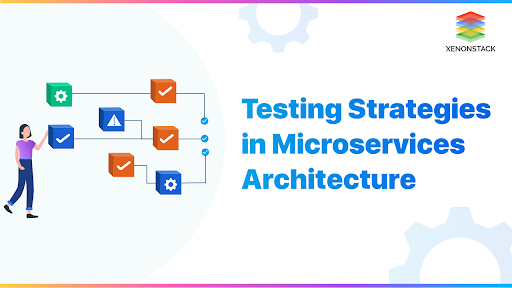
Microservices have been an active topic in software engineering for a few years. Though it can be implemented in various ways, the basic concept is to break down an application into small services that can communicate with each other. This makes development, testing, and deployment much easier and more manageable. But how do you go about testing microservices? In this post, we’ll look at some of the most common microservices testing strategies and techniques.
Table of Contents
Strategies And Techniques That Can Be Used To Test Microservices
- One approach to testing microservices is to use a tool that allows you to simulate the dependencies of a service. This can be useful for testing how a service responds when its dependencies are unavailable or slow to respond.
- Another approach is to use a tool that allows you to test the interactions between services. This can be used to test how services coordinate and find potential problems in how services are integrated.
- A third approach is to use a tool that allows you to test the performance of a service. This can be used to find bottlenecks in how a service is implemented or to find ways to improve the performance.
- Finally, it’s also important to consider how you’ll deploy your microservices. This includes deciding how you’ll package your services, how you’ll deploy them to different environments, and how you’ll manage them in production.
These are just a few strategies and techniques that can be used to test microservices. By carefully planning your tests, you can ensure that your microservices are robust and reliable.
Types Of Microservices Testing
Let’s look at several types of microservices testing.
Unit Testing
Unit testing is software testing where individual units of code are tested to verify that they are working as expected.
Integration Testing
Integration testing is a type of testing that verifies how different units of code work together.
Component Testing
Component testing is a type of testing that verifies the functionality of individual software components or units. In a microservices architecture, each microservice is a self-contained unit that can be tested independently. This means that component testing is particularly important in microservices, as it helps ensure that each service works as expected.
End-to-End Testing
End to end testing is a critical part of the development process for microservices. By ensuring that all system components work together as intended, end-to-end tests help prevent issues from arising in production. There are many tools available to help with end-to-end testing; In addition, most cloud providers offer services that make it easy to set up and run end-to-end tests in a scalable way.
However, it is important to remember that end-to-end tests should only be used to verify functionality; they should not be relied upon for performance or security testing. Nevertheless, when used correctly, end-to-end testing can be a valuable tool for ensuring the quality of a microservice system.
List Of Best Microservices Testing Tools
1) SoapUI
SoapUI is a leading microservices testing tool that allows you to test REST, SOAP, and web services. In addition, it provides various features such as assertions, testing of secure web services, load testing, etc. SoapUI is available in both free and paid versions.
2)Apache JMeter
Apache JMeter is one of the most popular open-source load and performance testing tools. It can be used to test the performance of web applications and web services, making it an ideal tool for microservices testing. Apache JMeter is highly customizable. Additionally, Apache JMeter provides a comprehensive set of listeners that can monitor your tests’ performance in real-time. As a result, Apache JMeter is an essential tool for any team looking to ensure the performance of their microservices.
3)Hoverfly
Hoverfly is an open-source tool that can be used for simulating microservices. For example, it can be used to test the interactions between services or the performance of a system. Hoverfly is written in Golang and uses gRPC for communication. The tool is available on GitHub.
Conclusion
Microservices testing can be a bit overwhelming initially, but it’s important to remember that many different strategies and techniques can be used. The most crucial aspect is to select the best approach for your project and team. With the right strategy in place, microservices testing can be a breeze.
Hello, I am a professional writer and blogger at Adclays.com. I love to explore the latest topics and write on those topics. I spend the maximum of my time on reading and writing interesting topics which provide valuable piece of information to my readers whether it comes to the latest fashion, technology, healthy lifestyle, business information, etc. Explore my writings by visiting the website.